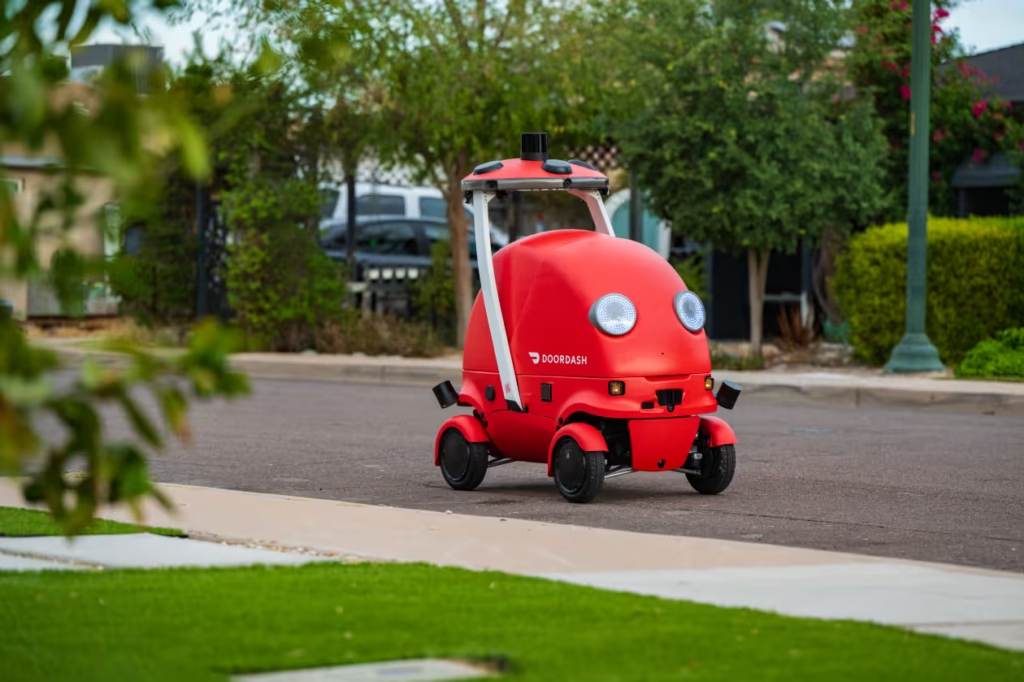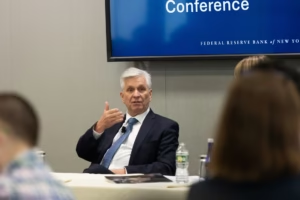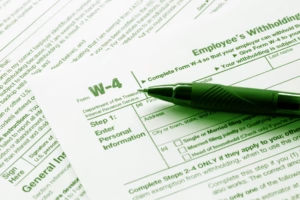Dot, DoorDash’s self-driving delivery car, is presently operating in the Phoenix metropolitan region.
DoorDash Inc. is introducing a number of new capabilities, such as restaurant reservations and a new autonomous delivery robot. One analyst stated on Wednesday that while this move would have many advantages, it also runs the risk of “commoditization” when services from competing platforms begin to overlap.
As part of its larger initiatives to strengthen its position in local economies, DoorDash (DASH) announced the expansion on Tuesday.
In addition to the delivery robot, Dot, DoorDash introduced technologies that let customers make reservations at restaurants, help establishments provide consistent service, and help shops handle orders and inventory. Additionally, according to DoorDash, individuals will be able to apply to become video producers who would showcase nearby eateries.
In an email, Zacks Investment Research stock strategist Ethan Feller stated that DoorDash’s announcement demonstrates how the delivery app, along with other businesses like Uber Technologies Inc. (UBER) and Amazon.com Inc. (AMZN), has contributed to transforming delivery from a convenience into a standard. He pointed out that the new initiatives will increase the pressure on reservation websites while also bolstering DoorDash’s relationships with eateries and other companies.
However, he went on to say that the action calls into question the company’s priorities.
“Any time a company branches beyond its core product, it risks diluting focus and potentially moving away from what drives the majority of its revenue,” Feller stated. “In industries like delivery or reservations, where rivals might provide comparable services, commoditization is also always a possibility.
“That said, good companies run these kinds of experiments,” he stated. “They can be quite helpful if they function. They can be thrown away if they don’t. There is an imbalance in the opportunities. There have been many unsuccessful product wagers made by even the largest corporations in the world, like Apple, Google, and Amazon.
Concerns over “commoditization,” at least in the context of takeout delivery, are not particularly recent. During a 2019 earnings call, Grubhub, a food delivery company, claimed that the main competitors in the market all employed nearly the same algorithms and had comparable service durations.
According to Matt Maloney, the CEO of Grubhub at the time, a five-minute variation in service speed was “negligible for diners.” Delivery platforms have since made an effort to bring a wider variety of goods to customers’ doorsteps.
Instacart (CART) now faces increased competition from DoorDash, which has branched out from takeout delivery to grocery delivery and other retail services. Uber started off as a ride-hailing service before expanding to include grocery and restaurant delivery services. Self-driving delivery carts are already frequently seen on pavements in several cities. Amazon and Walmart Inc. (WMT) have grown into titans of delivery and e-commerce.
In contrast, Airbnb (ABNB) redesigned its app last year and revealed plans to add additional features like in-home meals, spa treatments, and local tours. However, some analysts questioned when those additional offerings would begin to contribute significantly to revenue growth.
According to Feller, DoorDash currently holds about 60% of the market for meal delivery in the US. However, given that its stock price has risen by almost 60% this year, he advised investors to be “mindful” of the progressively high valuation.
Currently operating in the Phoenix metro area, DoorDash’s Dot delivery vehicle is ten times smaller than a typical car and has a top speed of twenty miles per hour. According to Feller, the introduction of autonomous delivery robots will present safety and legal issues; maintaining those vehicles and fixing them in the event that they are vandalized or weather-damaged will incur expenses.
“While picking up food at a restaurant seems like simple task for a human, it is a monumentally complex task for a machine,” he said.





